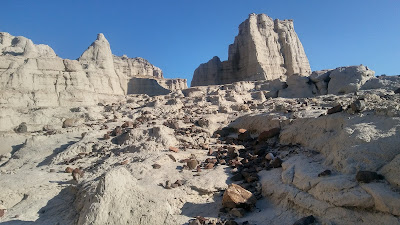What's a "Harvey Girl"?
I had read about the "Harvey Girls" and thought La Posada might be an interesting stop on our drive through Winslow, AZ. A drive that we take a few times a year. Besides, a nice brunch was calling our names.
Fred Harvey's Last Great Railroad Hotel
The story of Fred Harvey “civilizing the west” by introducing linen, silverware, china, crystal, and impeccable service to railroad travel.
Fred Harvey frequently traveled by rail for his work and was dissatisfied with the service he found He began a restaurant chain to change this. Harvey saw his restaurants as the most refined restaurants in the American West. The rowdiness of his male wait staff created a problem. To help him succeed, he hired independent, hard-working young women instead. Newspaper ads offered well-bred ladies a fair wage, steady work, uniform, a place to live, and a ticket to ride! The thousands that answered came to be known as "Harvey Girls" at the many Harvey Houses along the Santa Fe Railroad.
Harvey girls were young, single, intelligent women who were also of “good character,” and had the sort of sense of adventure that took them to unknown territory in the 1880s to work as waitresses.
This is the last standing Harvey House. The railroad had planned to tear down the building but it turned out to be too expensive to demolish the four foot thick walls. At the peak of Harvey houses,there were 84 across the country.
We had brunch in the Turquoise Room while watching trains pass by.
 |
| A map of the railroad and Harvey Houses on my placemat. |
Watching the trains passing by.
There are many artists in the southwest. Throughout Posada their works were on display.
La Posada has its own art gallery that I could have spent much more time rxploring. Tina Mion, a contemporary artist had some interesting selections. At first I would look at the paintings and think "OK?". But that would change once I read the explanation and looked again. Most of the time, I would then "get it".
James Cagney, Franklin D. Roosevelt, Jimmy Stewart, Roy Rogers, Carole Lombard, Amelia Earhart and John Wayne were just a few of the people that have visited La Posada.
The courtyards were made in a U for protection for the frequent winds through Winslow.
The place is an art gallery but also a gallery of history with stories on the walls.
The hotel rooms were elegant with a southwest artistic flair.
More of the peaceful gardens.
It was a good end to the great six months of travel and adventuress as we made this stop along the Historic Route 66 on our way to Mesa Arizona for a much needed rest.



















































